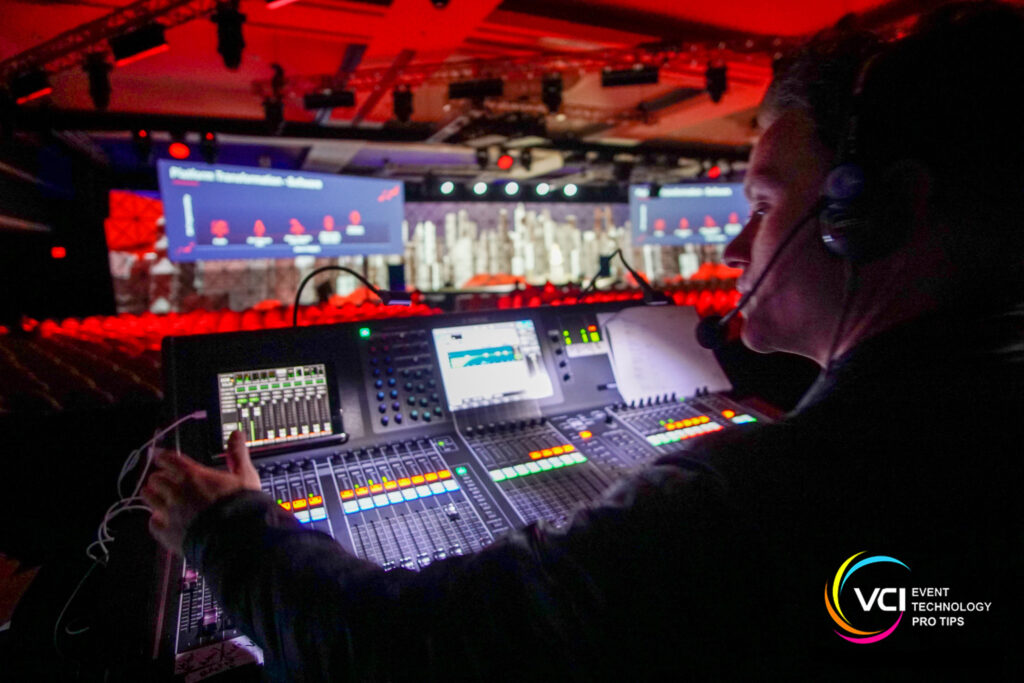Category
Microphone Technique for Live Events
The microphone is one of the fundamental pieces of equipment used at almost all live events. However, when not used correctly, microphones can quickly create high-stress levels for presenters, attendees, and planners alike.
We recently caught up with one of our premier front-of-house engineers, Dave Dupre, about best practices when using microphones. Below are some great tips that he believes all presenters should be aware of to avoid those unpleasant; snap, crackle, and pops.

Dave DuPre at Front of House Audio Engineer position during tech rehearsal.
Wireless Handhelds
- The very bottom is the antenna. Don’t block it with your hand.
- The very top is the element that picks up the sound of your voice. Don’t block it with your hand, either.
- Holding the middle of the microphone, keep the element (the top) about 2 inches (three fingers) from your lips.
- As you turn your head, you should move the microphone with you, like it’s stuck in a gravitational position in front of your lips.
Lavalier (clip-on lapel)
- Be very careful not to strike the element. If you have long hair, style it away from the microphone. If you have a necklace on, remove it. If you still have questions, ask for assistance from your audio professional.
- If the microphone was clipped very far to the left or right on a lapel or collar, try to speak to the center or towards the microphone (this scenario is common if your stage position is in a panel on one side of the stage).
Lectern Gooseneck
- If the element is too high or low, bend the gooseneck so the element is on the same plane as your mouth.
- No need to lean into this microphone, it will pick up your voice if you stand naturally up-to a foot away.
All Scenarios
- When presenting, don’t be afraid of your own voice. Don’t lower your voice to compensate for loudness. It’s better to be heard than not. Let your audio professional do their job.
- Never miss an opportunity to do a tech rehearsal before you present. Not only does this help you gain confidence in your performance, it is very helpful for your audio professional to hear you. Engineers always appreciate presenters that take the time to rehearse. It’s an opportunity to create cohesiveness and in the end, everyone performs at their best.




